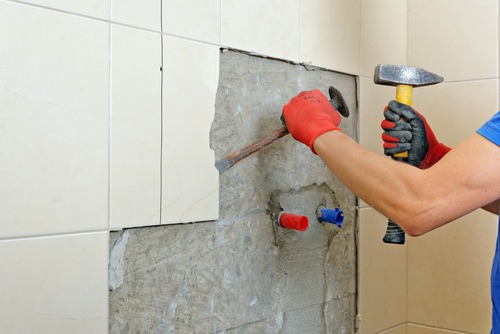You may have been thinking about renovating your high-rise unit’s bathroom due to functionality issues, or you’re planning on reselling the unit, or you simply want to update your space as the needs of you or your family have changed. But before you begin the renovation, make sure to carefully plan everything beforehand and consider reviewing this bathroom renovation guide for a successful revamp. Here are a few tips to get you started:
1. Check Your Building’s Requirements
Before making any major changes, visit your building manager’s office and ask about the building’s renovation guidelines. This is also your chance to review your unit’s floor plan. High-rise units rely on building codes and inspectors to manage the compliance of a building, so you must be aware of the requirements before making any major changes in your unit.
2. Sketch Your Ideas and Consult
Once you have familiarized yourself with the building rules, sketch out your renovation ideas. Make sure that your plan fits your purpose for renovating, whether it is for resale, lease, or long-term use. A lot of high-rise apartments in Chicago have interesting interior designs that you can refer to. Check out this Chicago high-rise apartment tour for some ideas on how to choose a suitable design for different parts of your home.
Then, ask for a consultation session with your building manager and maintenance personnel. They should know the building inside out, and will be able to tell you whether a certain idea would work or not, particularly when it comes to plumbing and electrical access.
3. Go for Natural Lighting or Warm Lighting
Lighting is not only vital in your bathroom, but all around your house, as it affects the mood and comfortability of your home. If possible, take advantage of natural lighting from your bath’s window. It not only makes your bathroom seem wider, but also helps you save on your electricity bills. One way for you to achieve this is by fitting shutters with white opaque-glass panels instead of the traditional louvers.
However, if your bathroom is windowless, you can achieve a similar natural daylight effect when you use energy-saving LED technology daylight lighting.
4. Plumbing Considerations
If you are planning to add a second sink, installing it is simple and has no impact on plumbing. However, if you are using a wall-hung sink or are living in an old high rise, you may have to open the plumbing wall to attach everything. Old high-rise buildings usually have lower plumbing installations, so if you want your plumbing to be tighter, you have to open the plumbing wall and raise the water supply lines and drain.
The same is true if you are planning on changing the shower. Old building units usually have lower shower plumbing, so you might have to open the plumbing wall and raise it. Even if you live a newly-constructed unit, raising the shower will also be beneficial because it will allow you to install a thermostatic valve where you can set a default temperature.
5. Electrical Considerations
High-rise buildings were built according to commercial standards so there will be plenty of electrical outlets within your unit. Assess where you will need electrical access in your bathroom, though you can never go wrong with adding more outlets around your sink since this place is commonly used as a working space inside the bath.
If you want more convenience and less extension (or octopus) wires, also consider placing an electrical outlet near your toilet. This will be useful for a toilet seat heater and such. Remember that no matter how many outlets you install, they have to fit into the electric panel.
6. Allocate Your Budget and Stick to It
Renovation costs are expectedly higher than mere refurbishing, so you must be financially ready before you dive into any major changes. Find out the cost of materials you plan on using. For instance, you can tile your bathroom on a budget as long as you choose the right design or combination of inexpensive tiles.
Also, consider whether the changes that need to be done are things you can do yourself or if they will require the expertise of a contractor. Knowing these factors will guide you in getting a rough estimate on how much you need to spend. If it is not for long-term use, you might have to rethink on spending too much and adjust your allotted budget accordingly.
7. Consider Hiring a Professional Contractor
There are renovation risks that can be mitigated by an experienced and professional general contractor. If your budget allows, hiring a contractor might be better for you. Not only does it lessen the risks, but it also expedites the entire renovation process. Just remember to verify the contractor’s renovation experience and portfolio to know whether their skills fit your revamp plans. When the renovation is already underway, discuss the workflow plan in detail and strictly monitor to keep updated on whatever issues that may arise.
Conclusion
It is inevitable to feel overwhelmed and scared to start any major bathroom renovation, especially if it is your first big project. But whether your bathroom is big and spacious or small and compact, as long as you apply smart planning and budgeting, you can be ready to renovate your space in no time. Have fun renovating!

